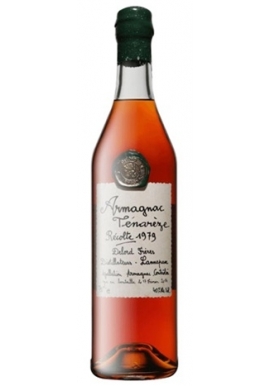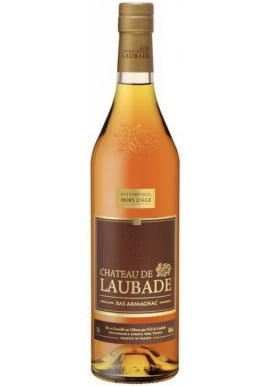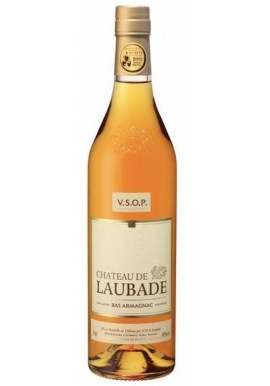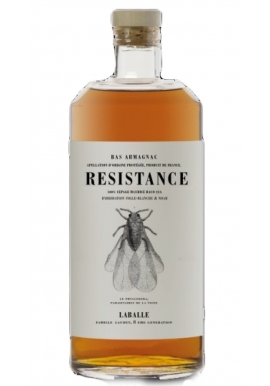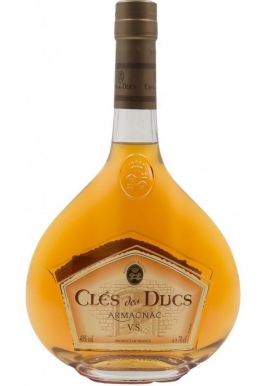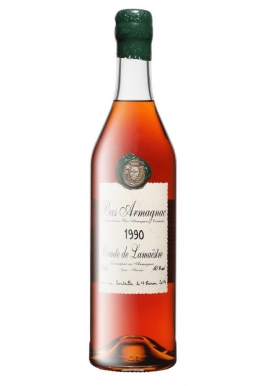Armagnac is the oldest brandy distilled in France, and in the past was consumed for its therapeutic benefits. In the 14th century, prior vital Du Four, a Cardinal, claimed it had 40 virtues. It makes disappear redness and burning of the eyes, and stops them from tearing; it cures hepatitis, sober consumption adhering.
It cures gout, cankers, and...
Armagnac is the oldest brandy distilled in France, and in the past was consumed for its therapeutic benefits. In the 14th century, prior vital Du Four, a Cardinal, claimed it had 40 virtues. It makes disappear redness and burning of the eyes, and stops them from tearing; it cures hepatitis, sober consumption adhering.
It cures gout, cankers, and fistula by ingestion; restores the paralysed member by massage; and heals wounds of the skin by application. It enlivens the spirit, partaken in moderation, recalls the past to memory, renders men joyous, preserves youth and retards senility. And when retained in the mouth, it loosens the tongue and emboldens the wit, if someone timid from time to time himself permits."
Between the 15th and 17th centuries, Armagnac was traded on the markets of Saint - Sever, Mont-de-Marsan, and Aire-sur-l'Adour. Dutch merchants began promoting the trade more widely.
The Armagnac region lies between the Adour and Garonne rivers in the foothills of the Pyreness. The region was granted AOC status in 1936.The official production area is divided into three districts that lie in the departements of Gers,Landes, and Lot-et-Garonne. Armagnac is traditionally distilled once, which results initially in a less polished spirit than Cognac, where double distillation usually takes place. However, long aging in oak barrels softens the taste and causes the development of more complex flavours and a brown colour. Aging in the barrel removes a part of the alcohol and water by evaporation (known as part des anges—"angel's tribute" or "angel's share") and allows more complex aromatic compounds to appear by oxidation, which further improves the flavour. When the alcohol reaches 40%, the Armagnac can be transferred to large glass bottles (called "Dame Jeanne") for storage. From then on, the Armagnac does not age or develop further and can be bottled for sale from the next year on.
Armagnac is sold under several different classifications, mostly referring to the age of the constituent brandies. When brandies of different ages have been blended, the age on the bottle refers to the youngest component. A three star, or "VS," Armagnac is a mix of several Armagnacs that have seen at least two years of aging in wood. For the VSOP, the aging is at least five years; and for XO, at least six. Hors d'âge means the youngest component in the blend is at least ten years old. Older and better Armagnacs are often sold as vintages, with the bottles containing Armagnac from a single year, the year being noted on the bottle. Armagnac should be stored vertically to avoid damaging the stopper with alcohol. Once opened, a bottle should stay drinkable for years.
Armagnac has its age requirements, like cognac, with the dating period starting on September 1st in the year after the harvest. Three Star in France will mean a minimum of one year, though for Britain and and the US, the requirement is three years. The Classifications are as follows:
Trois Etoiles (Three Stars): Wood aged for a minimum of 2 years
V.O, V.S.O.P. or Réserve: Wood aged for a minimum of 5 years
Extra, Napoleon, XO or Vieille Réserve: Wood aged for a minimum of 6 years
Hors d'Age: Wood aged for a minimum of 10 years
One or two houses confine themselves to offering only Bas Armagnac blends, and will say so on the label. In a blended Armagnac the age statement must always reflect the youngest spirit in the blend. Blended Armagnacs frequently have a greater percentage of older vintages in their mix than comparable Cognacs, making them a better value for the discerning buyer. And of course, to the annoyance of the cognac makers, Gascogne's also do a thriving trade in those vintage dated armagnacs (such as the wonderful brandies of Domaine Boingneres & Janneau). However, as with most of the noble spirits, age itself is not a guarantee of a better drink.
Most armagnacs peak, with regard to their fruit, alcohol and tannin balance, between their 18th and 30th birthdays. It is possible to obtain outstanding armagnacs distilled 30, 40, or 50 years ago; yet the majority that have remained in wood this entire time are overly dry and dominated by secondary aromas.
Armagnac There are 17 products.
-
$115.95
Chateau De Laubade De Laubade Bas Armagnac... Chateau De Laubade De...
Château de Laubade Hors d’Age offers the classic aromas of a fine Bas Armagnac. Age: 12 to 20 years old. Light amber colour. Candied fruits, spices, vanilla, oak, prune, rancio aromas. In the palate, it is elegant, masculine and powerful. Best served after a fine dinner, with a Roquefort cheese, an apple and pear pies. Château de Laubade Hors d’Age offers...
-
$95.95
Chateau De Laubade De Laubade Bas Armagnac... Chateau De Laubade De...
Château de Laubade V.S.O.P. 6 Year Old has a nice golden colour. It is rich with ripe fruits, plum, pastry, vanilla and citrus aromas. On the mouth, it is sweet, delicate and long. A finish of up to 8 minutes. Age: 6 to 12 years old. Château de Laubade V.S.O.P. 6 Year...
-
$129.95
Chateau Du Tariquet Armagnac 5 Year Old... Chateau Du Tariquet...
Chateau Du Tariquet Armagnac 5 Year Old, is made of 100% Folle Blanche grapes (the oldest variety in Armagnac), it has aromas of vanilla, cinnamon and dried fruit. the palate is well-balanced, smooth with spices and currants. The finish has spicy undertones, vanilla, prunes and dried fruit. Chateau Du Tariquet Armagnac 5 Year...
-
$129.95
Chateau Laballe Laballe Bas Armagnac... Chateau Laballe Laballe Bas...
A new release, this vibrant, next-gen Armagnac takes its name from A: the phylloxera-resistant Baco hybrid developed at the turn of the twentieth century--the etching adorning the label illustrates the formidable parasite that devastated French vineyards around this time. And B: the fact that it makes a stand against those forces that would diminish Baco... A new release, this vibrant, next-gen...
-
$79.95
Cles Des Ducs VS Armagnac 700ml Gascony... Cles Des Ducs VS Armagnac...
Cles Des Ducs VS Armagnac has been aged in Limousin oak for at least 2 years. Cles des Ducs have been making their popular Armagnac since 1774 in Panjas, within the Bas-Armagnac region. Fruity and full of flavuor. Cles Des Ducs VS Armagnac has been...
-
$159.95
Comete De Lamaestre Armagnac Lamaestre... Comete De Lamaestre...
Comete De Lamaestre 1979 has deep polished copper colour. Exudes sweet aromas of dates, toffee apple, vanilla, chocolate and nutmeg. The palate is full bodied, plush and round with medium dry flavours of dates, cocoa and soft spice perfectly counterpointed by drying and slightly grippy tannins. Dried apricot, nutmeg and clove aftertaste reverberates with... Comete De Lamaestre 1979 has deep...
-
$297.95
Comte De Lamestre Armagnac Com De Lam 1967... Comte De Lamestre Armagnac...
Comte de Lamaestre Bas-Armagnac 1967 40% 700ml, has a an amber colour. The nose shows strong sandalwood and cedary oak characters, plus cumquat and matchbox strike. The palate has good depth though, soft and supple. Comte de Lamaestre Bas-Armagnac 1967...
-
$125.95
Comte De Lamestre, Lamaestre 1990 Bas... Comte De Lamestre,...
Comte de Lamaestre Bas-Armagnac 1990 40% 700ml has a old gold colour, with orange reflections. On the nose a warm vanilla, butter and brioche, sustained by hazelnut & cocoa.The palate is obvious but soft tanins. Comte de Lamaestre Bas-Armagnac 1990...
-
$419.95
Comte De Laubade Armagnac Delords 62... Comte De Laubade Armagnac...
Comete De Laubade Armagnac Delords 62 has a beautiful amber color with mahogany lights. Very fine and elegant nose with notes of rancio and raisins. Very pleasant. Good and full structure in the mouth that is well balanced. Rich woody finish with hints of prunes. Comete De Laubade Armagnac Delords 62...
ABN: 11 806 263 393
Liquor Licenses
337 526 06
360 674 16
